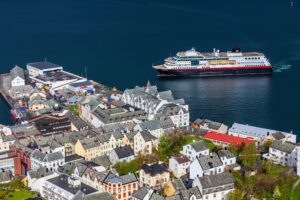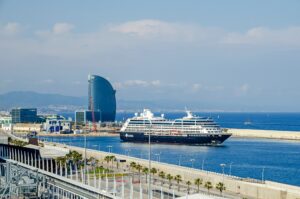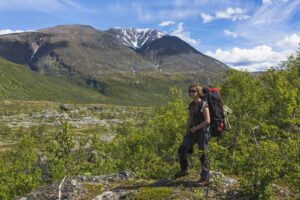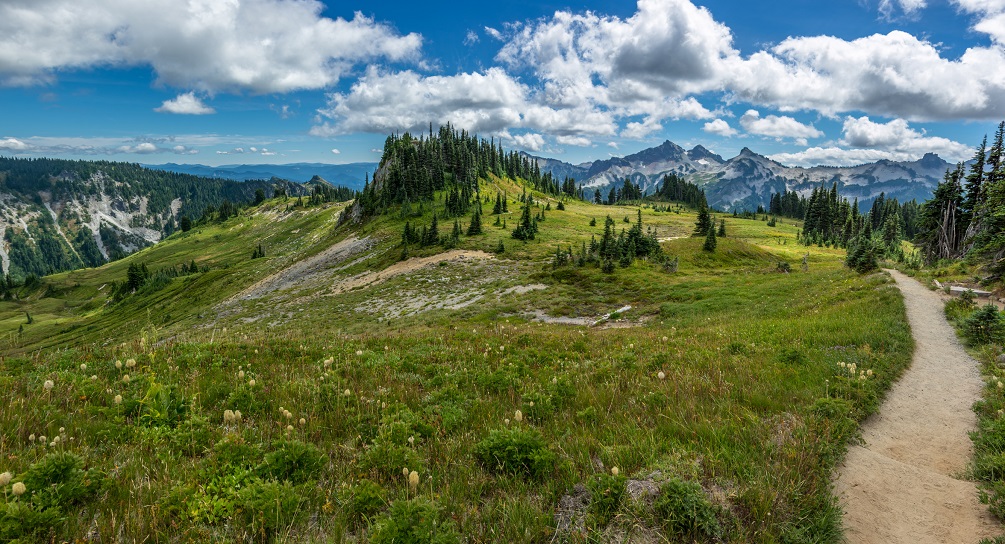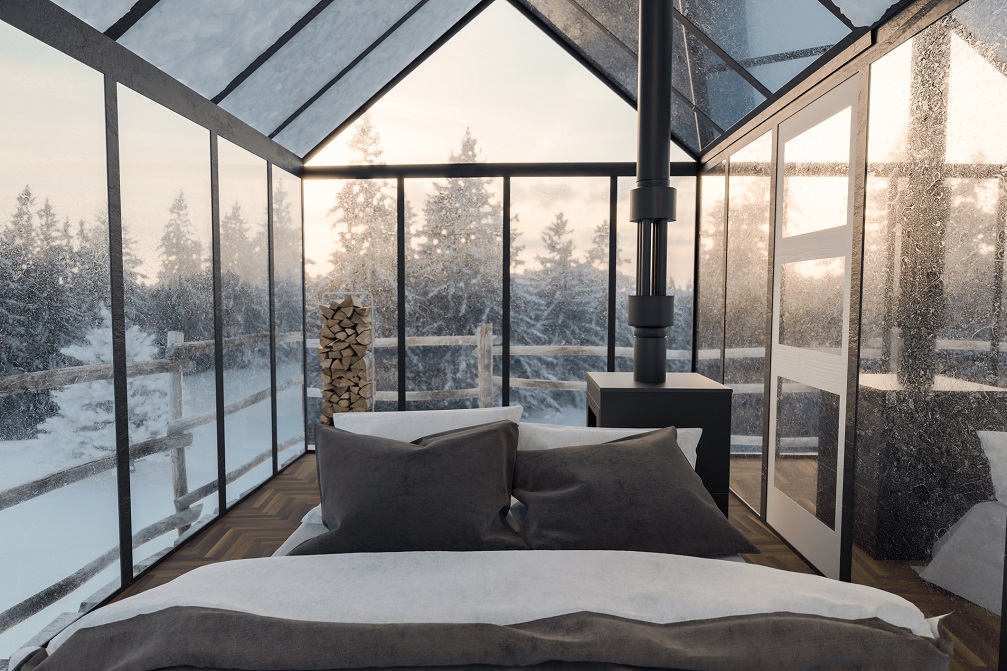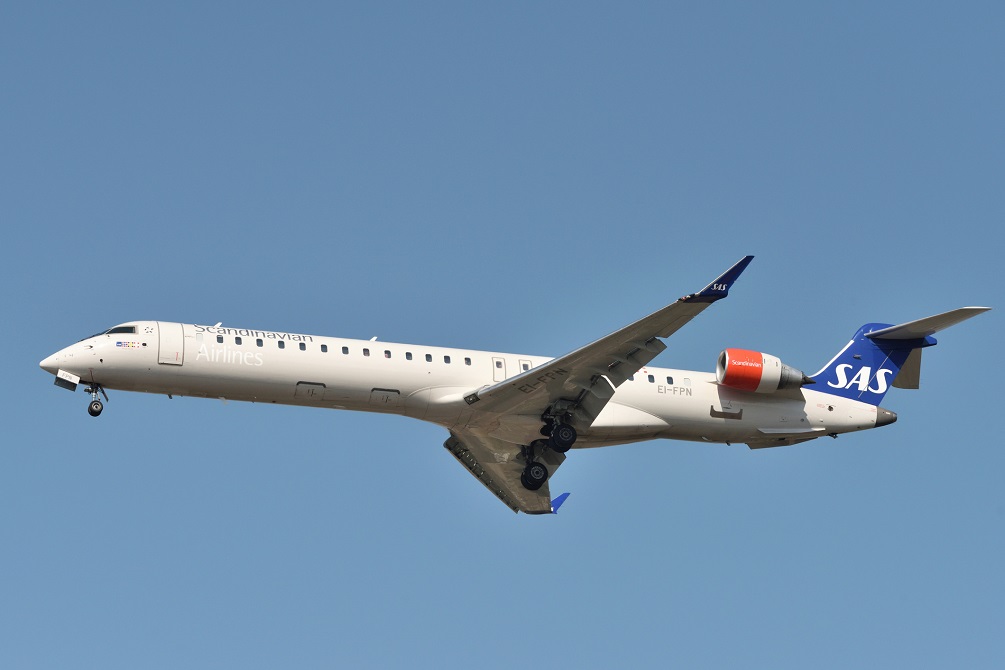Sweden
With its charming cities, enchanting forests, and bustling food scene, Sweden offers an unmatchable travel experience.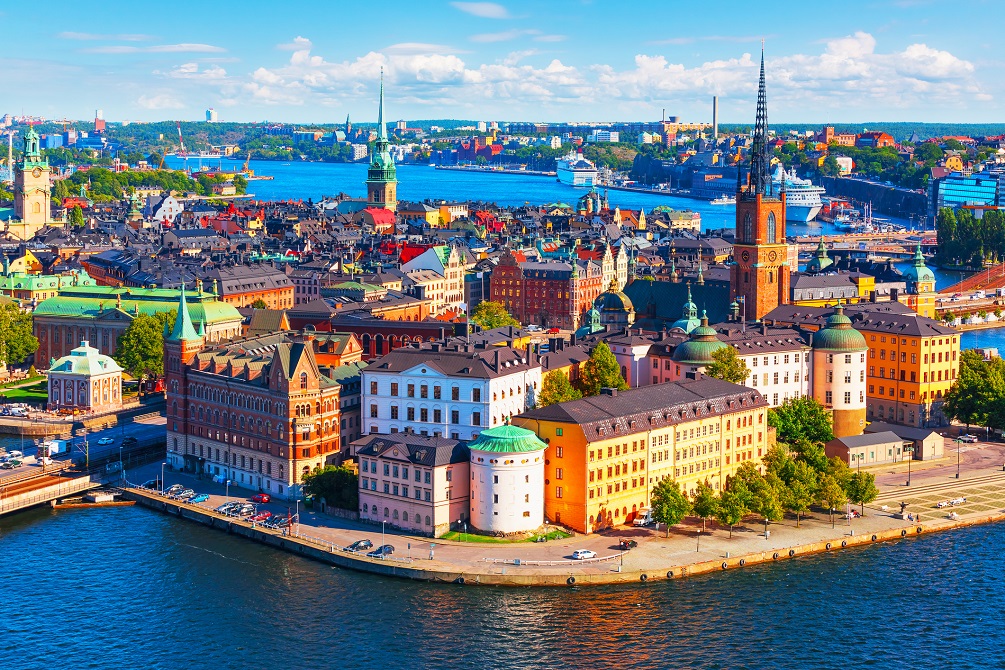
Lying at the northernmost point of Europe, Sweden is a Nordic country that can make for both an adventurous and relaxed holiday.
Sweden is the largest country in northern Europe. About 15% of it lies north of the Arctic Circle, and forests cover approximately 65% of the landscape.
The Scandinavian mountain range, craggy coastlines, and fertile plains are some highlights of Sweden’s terrain.
A Sweden holiday can look different for everyone.
If you want to explore the great outdoors, regions like Gastrikland are perfect for hiking or brave the frigged snowy mountains in the north. You can also rent a kayak to explore the quaysides from the water or cycle through historic districts.
For something more relaxed, the Swedish Lapland in the north is ideal to bask in the northern lights. Or explore the history and culture of the capital city, Stockholm.
Sweden has some of the most extraordinary hotels in the world.
There are dozens of hotels you can stay in that reflect the rich nature of Sweden, such as the icehotel in the northern regions of the country and the Islanna Treehouse Hotel near Lake Vänern in the south.
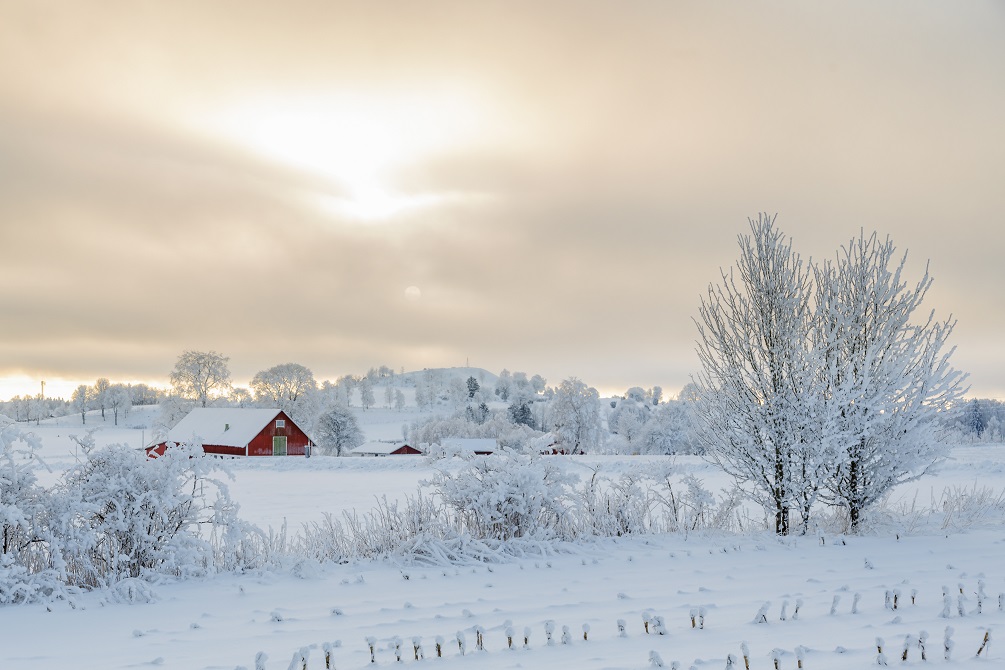


Because of its proximity to the Gulf Stream and northerly geographic location, Sweden enjoys a temperate climate.
There are major temperature extremes between summer and winter, which last from June to August and November to February, respectively.
Summers are characterized by sunny and hot weather, while winters are cold, gearing towards harsh in the far north.
Since Sweden lies at the northernmost point of the European landmass, summers are not harsh and humidity levels are moderate. Average temperatures are often above 20 °C (68 °F).
Summer is the best time to visit Sweden. It’s the ideal season to explore the charming cities of Stockholm and Gothenburg and the stunning beaches.
Winter temperatures differ across the country. Areas above the Arctic Circle experience intense winters, where temperatures are below -30 °C (-22 °F).
Snowfall is heavy on elevated areas for about eight months in a year. Summers in the far north are short and unpredictable.
Winters in the southern and central areas are milder, varying from year to year compared to the north. It doesn’t snow regularly, and the season is much shorter.
The average temperature in January ranges from −5 to 0 °C (23 to 32 °F).
Summer temperatures in the south and central regions of Sweden are comparable to those in southern England.
In the northeast, winters are intense, while summers are pleasantly warm.
Although winters are associated with frigged weather, it’s the best time to revel in the northern lights. The northern towns of Abisko or Kiruna are ideal for viewing this natural phenomenon.
Spring and autumn are present in Sweden, lasting from March to May and September to October, respectively. The weather can be unpredictable during these times, from warm summery days to cold wintery temperatures.
These seasons are the best time to enjoy Sweden without the crowds. You can bask in the northern lights and the midnight sun.
Sweden experiences full days of sunshine above the Arctic Circle from late May until mid-July. But the capital city, Stockholm, also has a few hours of semidarkness during these months.
In mid-December, you’ll find that there’s less than 6 hours of daylight in Stockholm, while in the northern areas, there is about 20 hours of darkness and the rest is merely twilight.
Although it rains throughout the year, late summer and autumn are the rainiest seasons. The average rainfall across the country is between 500 and 800 mm (20 and 31 in).
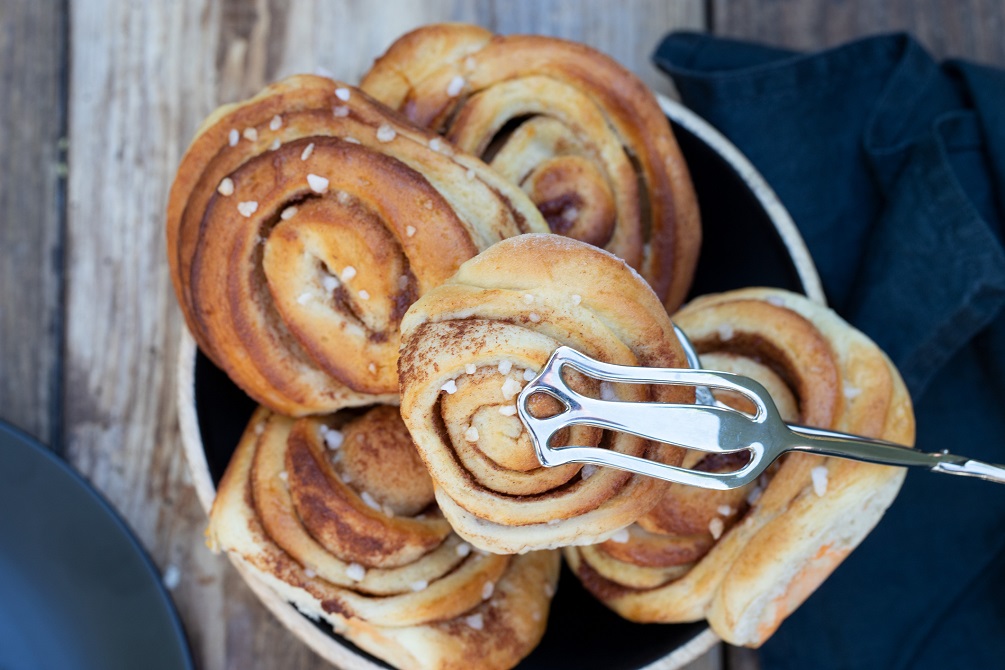


Simplicity is the essence of Swedish gastronomy, much like other Nordic countries’ cuisines.
Historically, the key ingredients for meals were dairy products, meat, potatoes, and fish, with few spices incorporated.
Over time, traditional Swedish dishes gave way to meals influenced by international cuisines. Today, modern Swedish cuisine includes plant-based options for vegetarians and vegans.
Swedish meatballs are the most traditional meal of Swedes, served with gravy, boiled potatoes, and lingonberry jam.
Potato pancakes (or raggmunk) are also unique to Swedes. Traditionally, they are served with fried salted pork and lingonberries.
Other classic dishes include Skagenröra (a salad made from fresh prawns, mayonnaise, dill, and red onion), Jansson’s Frestelse (a casserole consisting potatoes, onion, pickled sprats, bread crumbs, and cream), and Wallenbergare (a Swedish Hamburger served with green peas, boiled or mashed potatoes, gravy, and lingonberry jam).
If you’re feeling adventurous, try surströmming’ (fermented herring). They serve this meal with flat bread (tunnbröd), chopped boiled potato, and diced onion.
Sweden is the home of cinnamon rolls (or Kanelbullar), along with Denmark. So, if you’re looking for a dessert to try, there’s nothing like tasting an original cinnamon roll in Sweden.
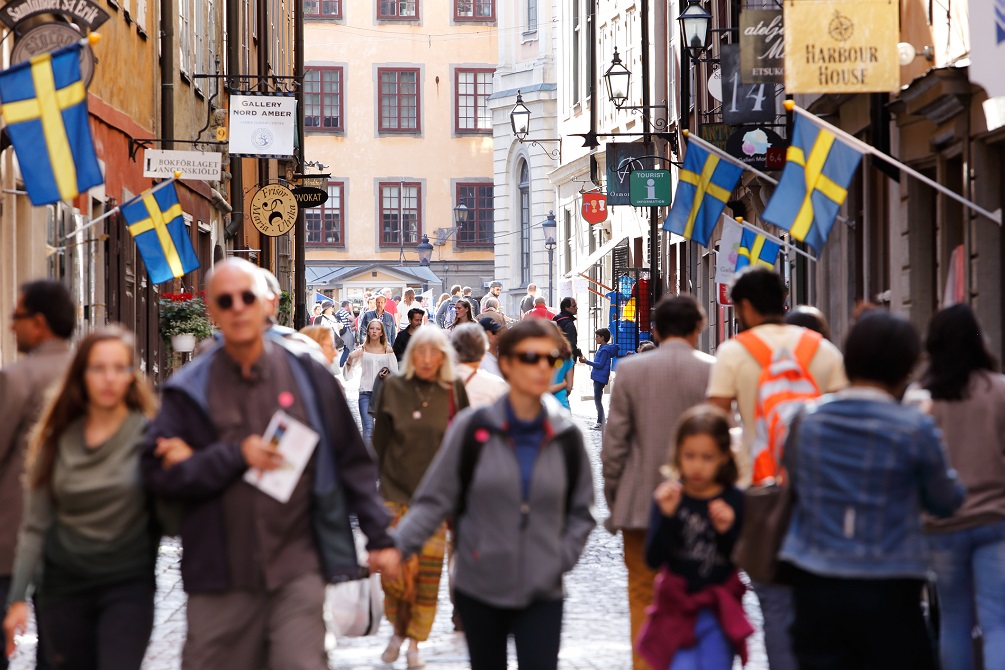


What you pack for your trip to Sweden depends on the time of year you’re visiting. Also, the activities you plan to do should be something you factor in.
Nordic winters are intense, so you must dress appropriately. Ditch the poly-blend jumpers and opt for woollen garments.
Layers are key. You should be ready for any unexpected drop or rise in temperature. Start with a thermal base and include knit weights and quality outerwear.
Being the home of multiple denim brands, it’s safe to say the Swedes embrace denim in all its textures and colours. Therefore, you can bring along your favourite pair(s) of jeans.
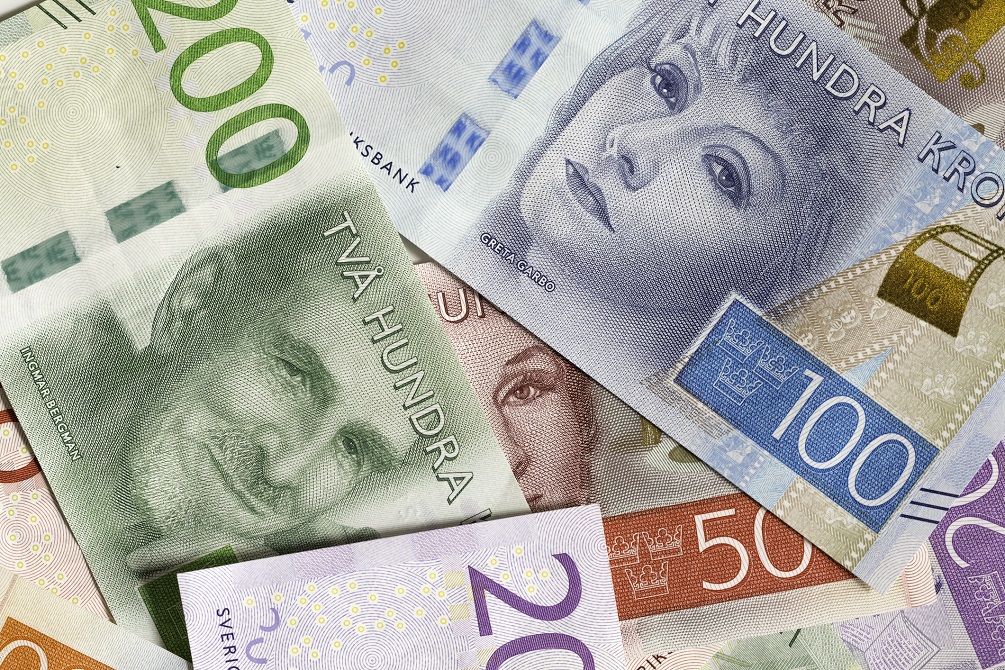


The krona (SEK) is the local tender in Sweden. One krona is subdivided into 100 öre.
Banknotes in circulation are in denominations of 20, 50, 100, 200, 500, and 1,000 kronor. The coins available are in denominations of 1, 2, 5, and 10 kronor.
Sweden is widely considered a cashless society.
Most major credit and debit cards are accepted for purchases from shops, museums, and restaurants. Contactless cards and mobile payments are popular as well.
If you have foreign currency on hand, you can exchange it for krona at any money exchange office. Compare the rates offered to make sure you get a good deal. Also, be cautious and alert to scams.
ATMs (‘Bankomat’ or ‘Uttagsautomat’ in Swedish) are widespread in Sweden; you can withdraw cash with your Mastercard, Visa, Cirrus, or Maestro card.
Ensure you find out from your bank or credit card provider if there are any fees for using your card abroad.
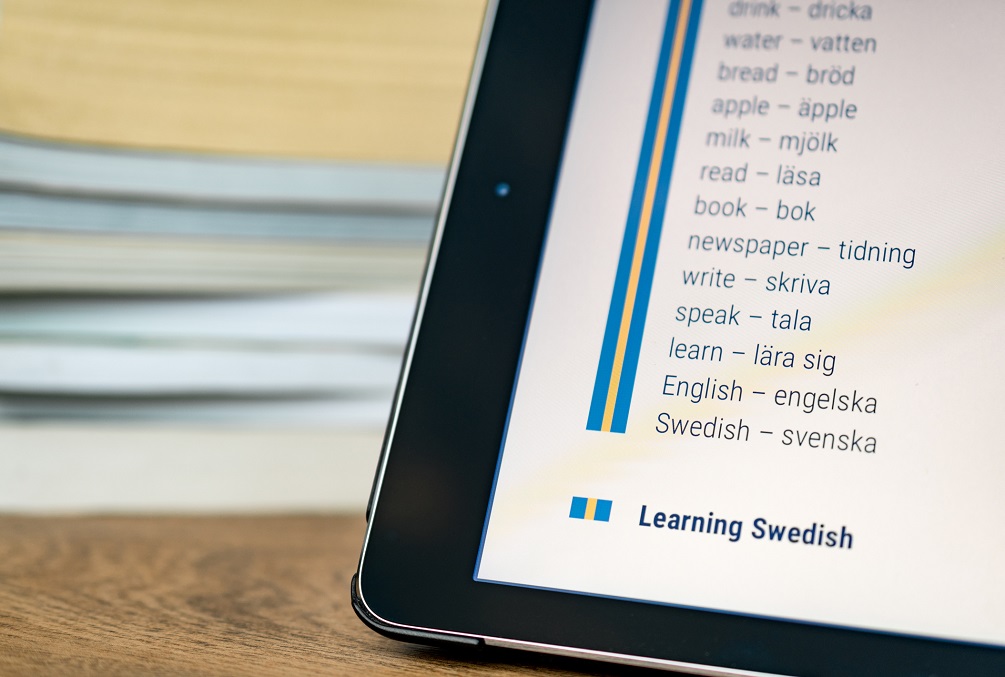


Swedish is the official language of Sweden and the lingua France of about 90% of Swedes. It’s a Nordic language, bearing some similarities to Danish and Norwegian, with slight differences in spelling and pronunciation.
In the southernmost parts of the country, residents speak a dialect influenced by Danish. Finnish is one of the largest minority languages spoken by Sweden Finns.
Apart from Finnish, there are other minority languages like Sami, Meänkieli, Yiddish, and Romani.
Most Swedes are English speakers, so it will make navigating the cities easier.
However, putting in some effort into learning the local language will go a long way with creating a more memorable travel experience.
Here are some useful Swedish words and phrases to learn for your trip, along with their pronunciations:
- Hello – hej (hey)
- Good morning – God morgen (good mor-gohn)
- Good afternoon – God kväll (good kvel)
- Good night – God natt (good naht)
- Goodbye – Hej då (hey door)
- Please – Snälla (snel-lah)
- Thank you – Tack så mycket (tak so mik-ket)
- You’re welcome – Varsegod (va-sha-good)
- Yes – Ja (yah)
- No – Nej (ney)
- I don’t understand – Jag förstår inte (yah for-shtor in-teh)
- How much is x? – Hur mycket kostar x? (who mee-ket kos-tar)
- Where is x? – Vart ligger x? (vart lee-ger)
There are some unique letters in the Swedish language like ä. This is how you pronounce them:
- ä – aair
- å – oh-wah
- ö – urr
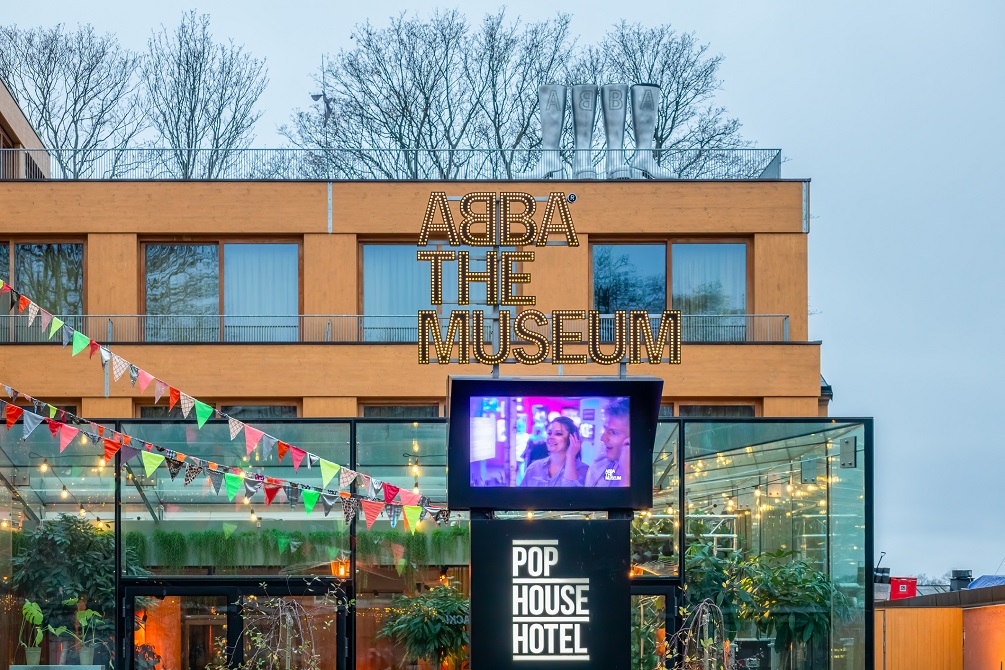


Swedish culture is best reflected in literature, arts, sculptures, cinema, and music. These forms of creative expression portray the Swedes relationship with the Nordic landscape and climate.
European cultures have contributed to the development of Swedish cultural elements, such as literature and fashion.
The country is home to several world-renowned authors, with seven Nobel Prizes in Literature awarded to Swedes.
Some notable painters include Carl Larsson and Anders Zorn, while pioneers in cinema works are Mauritz Stiller and Victor Sjöström.
Also, the internationally acclaimed Swedish pop group ABBA was formed in Stockholm.
Although there has been increasing modernity in urban areas, rural folk traditions are preserved in Gotland, Dalarna, and other various areas. National costumes, dances, and folk music preserve these traditions.
A spring celebration occurs on the last night of April. This celebration involves bonfires and song across Sweden. Other celebrations in the country are of religious origins, like St. Lucia’s Day, Advent, and Whitsuntide.
Football and ice hockey are some sports that have gained the greatest popularity in Sweden.
Most Swedes are Christian, with a large group belonging to the Church of Sweden. Islam is the second largest religion in Sweden.
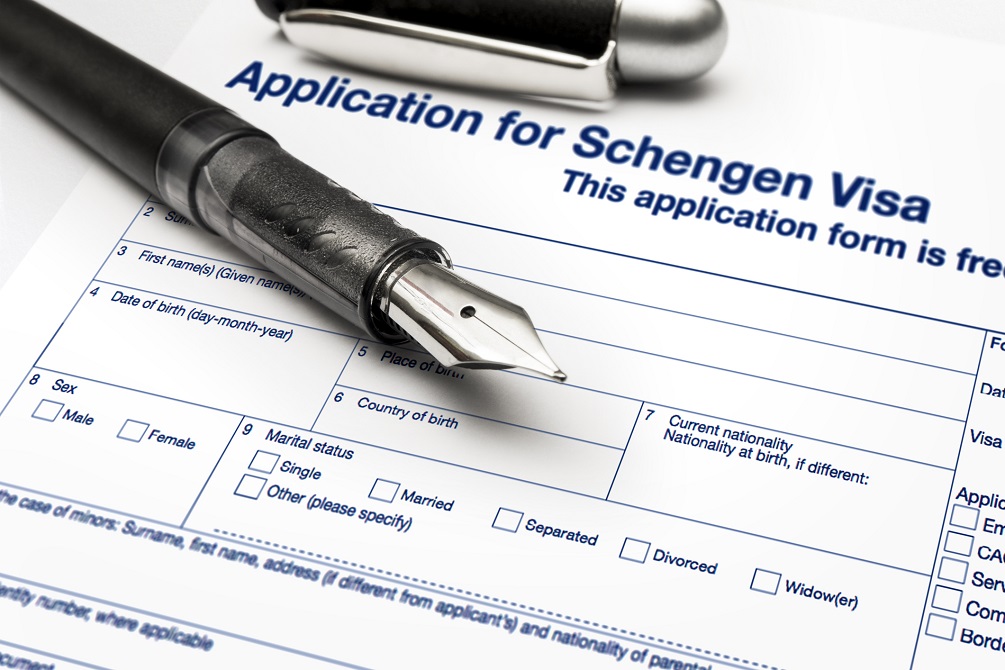


Since Sweden is within the Schengen zone, British citizens don’t need a visa to enter the country. You’re allowed a stay of up to 90 days in any 180-day period.
This applies to all Schengen countries, so if your itinerary includes countries that fall into this category, be wary of the 90-day limit. Your entire stay within the Schengen zone visit must remain below 90 days.
For a longer stay in Sweden, you’ll need to meet the Swedish government’s entry requirements. The Swedish embassy can advise you on the type of visa you may need.
Before leaving the Swedish border control, make sure your passport is stamped. This will help you avoid any issues with adhering to the 90-day limit, should you be traveling to other Schengen countries.
At Swedish border control, you may need to show proof of a return or onward travel ticket. Also, border guards may request proof that you have enough money for your stay.
As for your passport, a minimum validity of three months after your planned date of departure from Sweden is required. It should also be less than 10 years old.
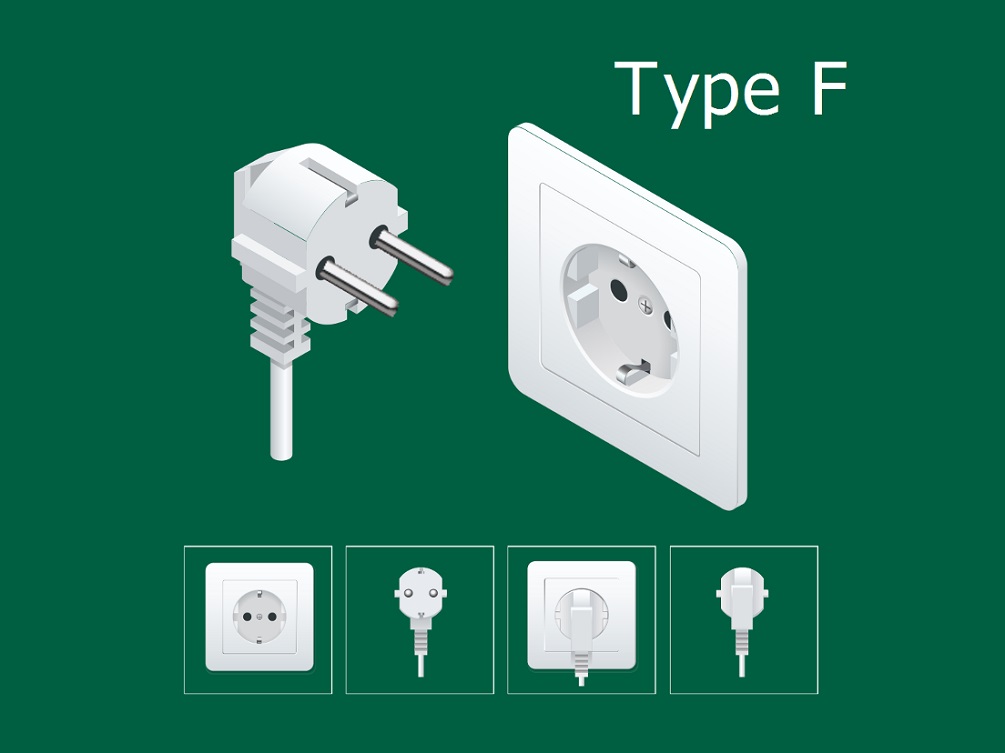


The plugs and sockets in Sweden are type F (circular with two round pins and two earth clips).
Sockets supply a standard voltage of 230 V and a standard frequency of 50 Hz.
You’ll need a power plug adapter when travelling to Sweden. Ensure you get one with surge protection. Also, you’ll need a voltage convertor for devices and appliances with a lower voltage than the standard.



Lying at the northernmost point of Europe, Sweden is a Nordic country that can make for both an adventurous and relaxed holiday.
Sweden is the largest country in northern Europe. About 15% of it lies north of the Arctic Circle, and forests cover approximately 65% of the landscape.
The Scandinavian mountain range, craggy coastlines, and fertile plains are some highlights of Sweden’s terrain.
A Sweden holiday can look different for everyone.
If you want to explore the great outdoors, regions like Gastrikland are perfect for hiking or brave the frigged snowy mountains in the north. You can also rent a kayak to explore the quaysides from the water or cycle through historic districts.
For something more relaxed, the Swedish Lapland in the north is ideal to bask in the northern lights. Or explore the history and culture of the capital city, Stockholm.
Sweden has some of the most extraordinary hotels in the world.
There are dozens of hotels you can stay in that reflect the rich nature of Sweden, such as the icehotel in the northern regions of the country and the Islanna Treehouse Hotel near Lake Vänern in the south.



Because of its proximity to the Gulf Stream and northerly geographic location, Sweden enjoys a temperate climate.
There are major temperature extremes between summer and winter, which last from June to August and November to February, respectively.
Summers are characterized by sunny and hot weather, while winters are cold, gearing towards harsh in the far north.
Since Sweden lies at the northernmost point of the European landmass, summers are not harsh and humidity levels are moderate. Average temperatures are often above 20 °C (68 °F).
Summer is the best time to visit Sweden. It’s the ideal season to explore the charming cities of Stockholm and Gothenburg and the stunning beaches.
Winter temperatures differ across the country. Areas above the Arctic Circle experience intense winters, where temperatures are below -30 °C (-22 °F).
Snowfall is heavy on elevated areas for about eight months in a year. Summers in the far north are short and unpredictable.
Winters in the southern and central areas are milder, varying from year to year compared to the north. It doesn’t snow regularly, and the season is much shorter.
The average temperature in January ranges from −5 to 0 °C (23 to 32 °F).
Summer temperatures in the south and central regions of Sweden are comparable to those in southern England.
In the northeast, winters are intense, while summers are pleasantly warm.
Although winters are associated with frigged weather, it’s the best time to revel in the northern lights. The northern towns of Abisko or Kiruna are ideal for viewing this natural phenomenon.
Spring and autumn are present in Sweden, lasting from March to May and September to October, respectively. The weather can be unpredictable during these times, from warm summery days to cold wintery temperatures.
These seasons are the best time to enjoy Sweden without the crowds. You can bask in the northern lights and the midnight sun.
Sweden experiences full days of sunshine above the Arctic Circle from late May until mid-July. But the capital city, Stockholm, also has a few hours of semidarkness during these months.
In mid-December, you’ll find that there’s less than 6 hours of daylight in Stockholm, while in the northern areas, there is about 20 hours of darkness and the rest is merely twilight.
Although it rains throughout the year, late summer and autumn are the rainiest seasons. The average rainfall across the country is between 500 and 800 mm (20 and 31 in).



Simplicity is the essence of Swedish gastronomy, much like other Nordic countries’ cuisines.
Historically, the key ingredients for meals were dairy products, meat, potatoes, and fish, with few spices incorporated.
Over time, traditional Swedish dishes gave way to meals influenced by international cuisines. Today, modern Swedish cuisine includes plant-based options for vegetarians and vegans.
Swedish meatballs are the most traditional meal of Swedes, served with gravy, boiled potatoes, and lingonberry jam.
Potato pancakes (or raggmunk) are also unique to Swedes. Traditionally, they are served with fried salted pork and lingonberries.
Other classic dishes include Skagenröra (a salad made from fresh prawns, mayonnaise, dill, and red onion), Jansson’s Frestelse (a casserole consisting potatoes, onion, pickled sprats, bread crumbs, and cream), and Wallenbergare (a Swedish Hamburger served with green peas, boiled or mashed potatoes, gravy, and lingonberry jam).
If you’re feeling adventurous, try surströmming’ (fermented herring). They serve this meal with flat bread (tunnbröd), chopped boiled potato, and diced onion.
Sweden is the home of cinnamon rolls (or Kanelbullar), along with Denmark. So, if you’re looking for a dessert to try, there’s nothing like tasting an original cinnamon roll in Sweden.



What you pack for your trip to Sweden depends on the time of year you’re visiting. Also, the activities you plan to do should be something you factor in.
Nordic winters are intense, so you must dress appropriately. Ditch the poly-blend jumpers and opt for woollen garments.
Layers are key. You should be ready for any unexpected drop or rise in temperature. Start with a thermal base and include knit weights and quality outerwear.
Being the home of multiple denim brands, it’s safe to say the Swedes embrace denim in all its textures and colours. Therefore, you can bring along your favourite pair(s) of jeans.



The krona (SEK) is the local tender in Sweden. One krona is subdivided into 100 öre.
Banknotes in circulation are in denominations of 20, 50, 100, 200, 500, and 1,000 kronor. The coins available are in denominations of 1, 2, 5, and 10 kronor.
Sweden is widely considered a cashless society.
Most major credit and debit cards are accepted for purchases from shops, museums, and restaurants. Contactless cards and mobile payments are popular as well.
If you have foreign currency on hand, you can exchange it for krona at any money exchange office. Compare the rates offered to make sure you get a good deal. Also, be cautious and alert to scams.
ATMs (‘Bankomat’ or ‘Uttagsautomat’ in Swedish) are widespread in Sweden; you can withdraw cash with your Mastercard, Visa, Cirrus, or Maestro card.
Ensure you find out from your bank or credit card provider if there are any fees for using your card abroad.



Swedish is the official language of Sweden and the lingua France of about 90% of Swedes. It’s a Nordic language, bearing some similarities to Danish and Norwegian, with slight differences in spelling and pronunciation.
In the southernmost parts of the country, residents speak a dialect influenced by Danish. Finnish is one of the largest minority languages spoken by Sweden Finns.
Apart from Finnish, there are other minority languages like Sami, Meänkieli, Yiddish, and Romani.
Most Swedes are English speakers, so it will make navigating the cities easier.
However, putting in some effort into learning the local language will go a long way with creating a more memorable travel experience.
Here are some useful Swedish words and phrases to learn for your trip, along with their pronunciations:
- Hello – hej (hey)
- Good morning – God morgen (good mor-gohn)
- Good afternoon – God kväll (good kvel)
- Good night – God natt (good naht)
- Goodbye – Hej då (hey door)
- Please – Snälla (snel-lah)
- Thank you – Tack så mycket (tak so mik-ket)
- You’re welcome – Varsegod (va-sha-good)
- Yes – Ja (yah)
- No – Nej (ney)
- I don’t understand – Jag förstår inte (yah for-shtor in-teh)
- How much is x? – Hur mycket kostar x? (who mee-ket kos-tar)
- Where is x? – Vart ligger x? (vart lee-ger)
There are some unique letters in the Swedish language like ä. This is how you pronounce them:
- ä – aair
- å – oh-wah
- ö – urr



Swedish culture is best reflected in literature, arts, sculptures, cinema, and music. These forms of creative expression portray the Swedes relationship with the Nordic landscape and climate.
European cultures have contributed to the development of Swedish cultural elements, such as literature and fashion.
The country is home to several world-renowned authors, with seven Nobel Prizes in Literature awarded to Swedes.
Some notable painters include Carl Larsson and Anders Zorn, while pioneers in cinema works are Mauritz Stiller and Victor Sjöström.
Also, the internationally acclaimed Swedish pop group ABBA was formed in Stockholm.
Although there has been increasing modernity in urban areas, rural folk traditions are preserved in Gotland, Dalarna, and other various areas. National costumes, dances, and folk music preserve these traditions.
A spring celebration occurs on the last night of April. This celebration involves bonfires and song across Sweden. Other celebrations in the country are of religious origins, like St. Lucia’s Day, Advent, and Whitsuntide.
Football and ice hockey are some sports that have gained the greatest popularity in Sweden.
Most Swedes are Christian, with a large group belonging to the Church of Sweden. Islam is the second largest religion in Sweden.



Since Sweden is within the Schengen zone, British citizens don’t need a visa to enter the country. You’re allowed a stay of up to 90 days in any 180-day period.
This applies to all Schengen countries, so if your itinerary includes countries that fall into this category, be wary of the 90-day limit. Your entire stay within the Schengen zone visit must remain below 90 days.
For a longer stay in Sweden, you’ll need to meet the Swedish government’s entry requirements. The Swedish embassy can advise you on the type of visa you may need.
Before leaving the Swedish border control, make sure your passport is stamped. This will help you avoid any issues with adhering to the 90-day limit, should you be traveling to other Schengen countries.
At Swedish border control, you may need to show proof of a return or onward travel ticket. Also, border guards may request proof that you have enough money for your stay.
As for your passport, a minimum validity of three months after your planned date of departure from Sweden is required. It should also be less than 10 years old.



The plugs and sockets in Sweden are type F (circular with two round pins and two earth clips).
Sockets supply a standard voltage of 230 V and a standard frequency of 50 Hz.
You’ll need a power plug adapter when travelling to Sweden. Ensure you get one with surge protection. Also, you’ll need a voltage convertor for devices and appliances with a lower voltage than the standard.
Travel related news, information and inspirational articles and videos for travellers booking flights or holidays to Sweden. Ask questions about travel in Sweden and get answers from Sweden experts
NEWS
Inspiration, Information and Travel Guides
MEET THE Sweden EXPERTS
If you are looking to book a holiday to Sweden or needs some help and advice planning travel to Sweden then contact one of the UK based independent travel agents that specialise in Sweden itineraries.
FEATURED VIDEOS
Your Travel Questions Answered
Ask any travel related question and get an answer from one of our experts that will provide you with an answer from their personal experience
There is no question for this category.











